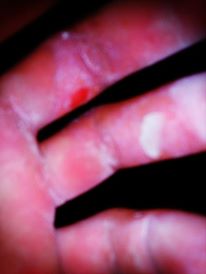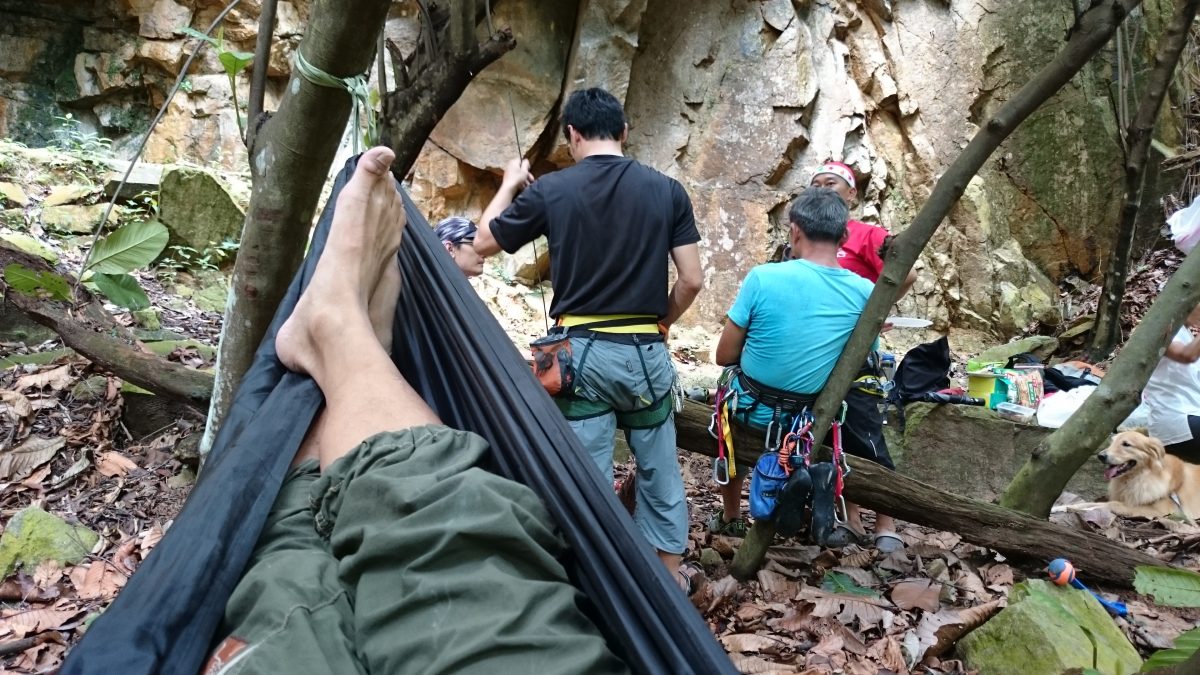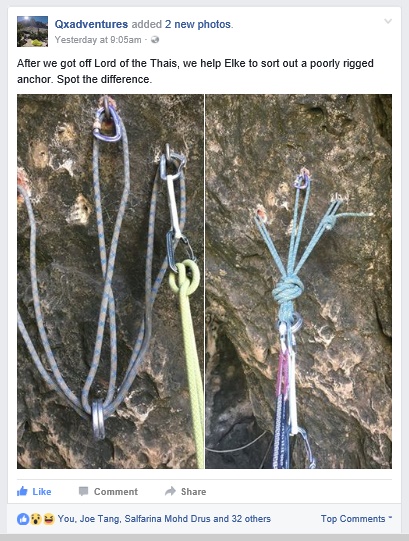
It’s that time of the year again… ok bi-yearly…. time to renew the First Aid Certs again. Now if you think about it, if you intend to work in the outdoor adventure line all your life or even just do part time work with it, you will be retaking that cert once every 2-3 years at least. That means the same old lectures, the same old pumping and blowing, the same old Stop-Think-Act or DrABC or whatever acronym they come up with now. Now my cert was coming to an end so it was time to start looking around for a refresher course (if anyone would take me) or a standard first aid course.Allow me to give you a bit of background first. I have held many first aid certs in my life, I have the usual St. John and Red Cross ones, i have the army Combat Casualty Aid Course (CCAC) ones, I have wilderness first aid certs and PADI required me to maintain a Emergency First Responder cert if i ever wanted a shot at becoming a DM (haven’t yet…) . At one point in time, i was even certified as an Emergency Medical Technician… i was told that that was equivalent to a Paramedic B licence ie. i can assist a full fledge paramedic. So like i said, if you want to work in this line, be prepared for first aid cert after first aid cert after first aid cert all your life…
Now as i was shopping around for another course provider, i was reminded about how complicated the first aid scene has become. There are so many choices available as you can see from my list above. I did a check with some of the climbing gyms and it seems like they accept all as long as it’s a first aid cert. So i thought it would be good to do a little check to remind us of what are the first aid requirements for instructors. First up of course, you need a valid first aid cert before you can conduct a course. That’s a given. So here we go, what other things do we need to know?
So according to the Singapore Mountaineering Federation (SMF) website :
“The Trainee Instructor must hold an approved, currently valid First Aid qualification before he/she may apply for the certification assessment. A list of first aid qualifications that are recognised by the SMF is shown below. Approval may be sought with the SMF to substitute with other first aid qualifications provided the request is accompanied by proof that their scope of coverage is equal or more advanced than those listed below.
Recognised First Aid Qualifications:
- Standard First Aid Course from the Singapore Red Cross Society
- Adult First Aid Course from the St. John Ambulance Association
- Wilderness First Aid Course
- SAF Military Medic Course”
http://www.smf.org.sg/?page_id=21538
That’s quite clear. As long as you have a cert in that (quite limited) list, you can conduct an SMF course. If your certification is not on the list, no problem, just get hold of the syllabus and drop SMF an email asking for an endorsement from them to use the cert in place of whatever they have on the list. Note that the first aid training needs to be more rigorous or at least as good as the recognised courses in the SMF list. If and when SMF do reply, you better then hold on to that email and proceed to conduct your courses.
Now it gets more tricky when you are asked by the climbing gyms to conduct what we call a “SEP” programme. That stands for Sports Education Programme (SEP) under the MOE. In a gist, there are special requirements for the instructor to fulfil before he can conduct a course under the SEP programme. Why do schools want to do SEP? Because they get 50% subsidy when they run it under the SEP banner. If you want more info about the SEP, you can click on this link : https://sep.sportsingapore.gov.sg/signupme.asp
“STANDARD FIRST AID
Instructor(s)/coach(es) are to be equipped with a valid recognised Standard First Aid Certificate at point of submission and at point of conduct of programme. Please view the List of SportSG Recognised First Aid courses“
So if you want to be a SEP instructor or coach, you will need to not just have a Standard First Aid Cert, but your cert must be from an approved list of vendors dictated by Sports Singapore. The list can be found here :
“Sport Singapore has appointed the National First Aid Council (NFAC) to accredit the Standard First Aid Courses by various training centres for the coaches in the National Registry of Coaches. The objective of this process is to ensure they have met the requirements for training facilities and training standards. “
And more details about the accreditation of first aid courses can be found here on the Sports Singapore website : https://www.sportsingapore.gov.sg/athletes-coaches/coaches-corner/national-registry-of-coaches/accredited-standard-first-aid-courses
Note that the standard first aid course that you are attending must have CPR+AED in it. There are some courses that do not come with it, they tend to be cheaper and shorter. Basic First Aid is also not recognised because it does not come with a certification, just a certificate of participation…which like i like to say, you can just go home print out on your home printer and decorate and make it nice for yourself…. ANYWAY… Yeah note that it has to be from this approved list of vendors or else it will not qualify you as an SEP instructor or coach. For those of you who are interested in signing up as a National Registry of Coaches (NROC) coach, i think there are even more stringent criteria that you need to fulfil, you need to read up further on the website.
So yeah, that’s a summary of the research that i’ve done so far. Gonna go get my cert renewed so that i can continue teaching. Looking forward to three boring days of lessons and trying to act cocky to those first timers taking the course. But it’s something we all got to do as instructors and coaches. Don’t get me wrong, i am not belittling the course, it’s good to get refreshed every 2 years because skills do fade, but it’s just a pain in a butt to have to jump through so many hoops just to renew certs all because they come from different organisations. In my experience having attended so many programmes, they all teach the same things… i wish someone can just coordinate that part then refreshing certs will be less painful. Oh well… Here we go… 1-and-2-and-3-and-4-and….
Peaceful Vibes!
Adrian
*Afterthought : If there are any discrepancies or inaccuracies in the information here, please let me know and i will make a correction. Thanks!



